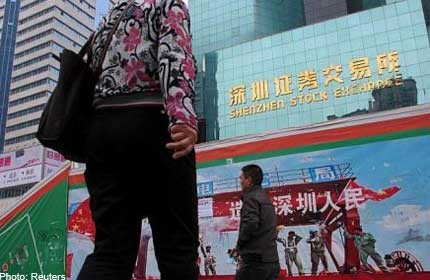Renewed push for Pearl River Delta zone

With news of Shanghai's new free trade zone causing some jitters in Hong Kong, long-dormant talk of a similar zone integrating Guangdong province, Hong Kong and Macau has flared up among its proponents.
Speaking to a Singapore delegation last week, Qianhai's No. 2 official said efforts to bring the five-year-old idea to fruition are ongoing.
"We are very proactive in trying to realise the Guangdong-Macau-Hong Kong free trade zone plan," said Mr Zhou Yi You from the new special economic zone in Shenzhen, Guangdong.
But the ambitious idea faces many obstacles, from local protectionism to Beijing's concerns that the stakes of allowing people, capital and goods to flow freely between Guangdong and the two special administrative regions of Hong Kong and Macau are too high, given their divergent political and economic systems.
Thus, the more cohesive Yangtze River Delta, comprising Shanghai and parts of Jiangsu and Zhejiang provinces, is stealing a march on the Pearl River Delta (PRD) which includes parts of Guangdong, Hong Kong and Macau, says Hong Kong University economist Tao Zhigang.
The Ministry of Commerce announced last Thursday that the State Council had approved the establishment of the mainland's first free trade zone, in Shanghai. Details are still lacking but a free trade zone means zero tariffs on imports, like in Hong Kong.
Meanwhile, the economy will be opened further to foreign players - Xinhua news agency said laws on foreign investment could be suspended for three years.
The consensus is that this will pose a threat to the PRD. It led China's drive to open up its economy from the 1980s but in recent years after the 2008 recession, the export-oriented bloc has been outperformed by the Yangtze region.
The latter caters more to the growing domestic market.
"The Shanghai free trade zone will make Yangtze River Delta the most important place to do business in China," predicts Professor Tao.
With such pressures, experts say the idea of a PRD free trade zone should be revived. Chatter among scholars even includes Taiwan in the set-up, says Mr Chen Shaobo of Hong Kong's Tianda Institute.
The concept was mooted as far back as in 2008, when then Guangdong party secretary Wang Yang proposed a Guangdong-Hong Kong-Macau "special cooperative zone" similar to a free trade zone, with the aim of turning it into a "world-class metropolitan belt".
Feasibility studies were conducted, but the idea faded from the public radar. One reason, said Mr Fang Zhou of the One Country Two Systems Research Institute, is the lack of consensus among central regulatory bodies in allowing professionals to work freely across the borders.
Another is the fragmented interests at the local level: For instance, Shenzhen and Guangzhou are both fighting to be financial centres in the region, along with Hong Kong, says Prof Tao.
Free trade would force each sub-region to focus on what it does best instead, so only Hong Kong will remain a financial centre given its advantages. Shenzhen would focus on high-tech manufacturing and Guangzhou on being the leading trading business centre with the rest of China.
But for now, the trend is for small districts - Qianhai, Nansha and Hengqin - to experiment with more liberal policies, says Professor Zhou Yunli of the Centre for Studies of Hong Kong, Macau and Pearl River Delta at Sun Yat-sen University. Nansha, for instance, is applying for free trade status, and he expects more to follow.
Prof Tao calls these "piecemeal" efforts. "Things may get worse before they get better. What we need is regional competition - that is, the policy for Shanghai and the ensuing growth in the Yangtze River Delta - to spur the Pearl River Delta to act together."
xueying@sph.com.sg

Get a copy of The Straits Times or go to straitstimes.com for more stories.